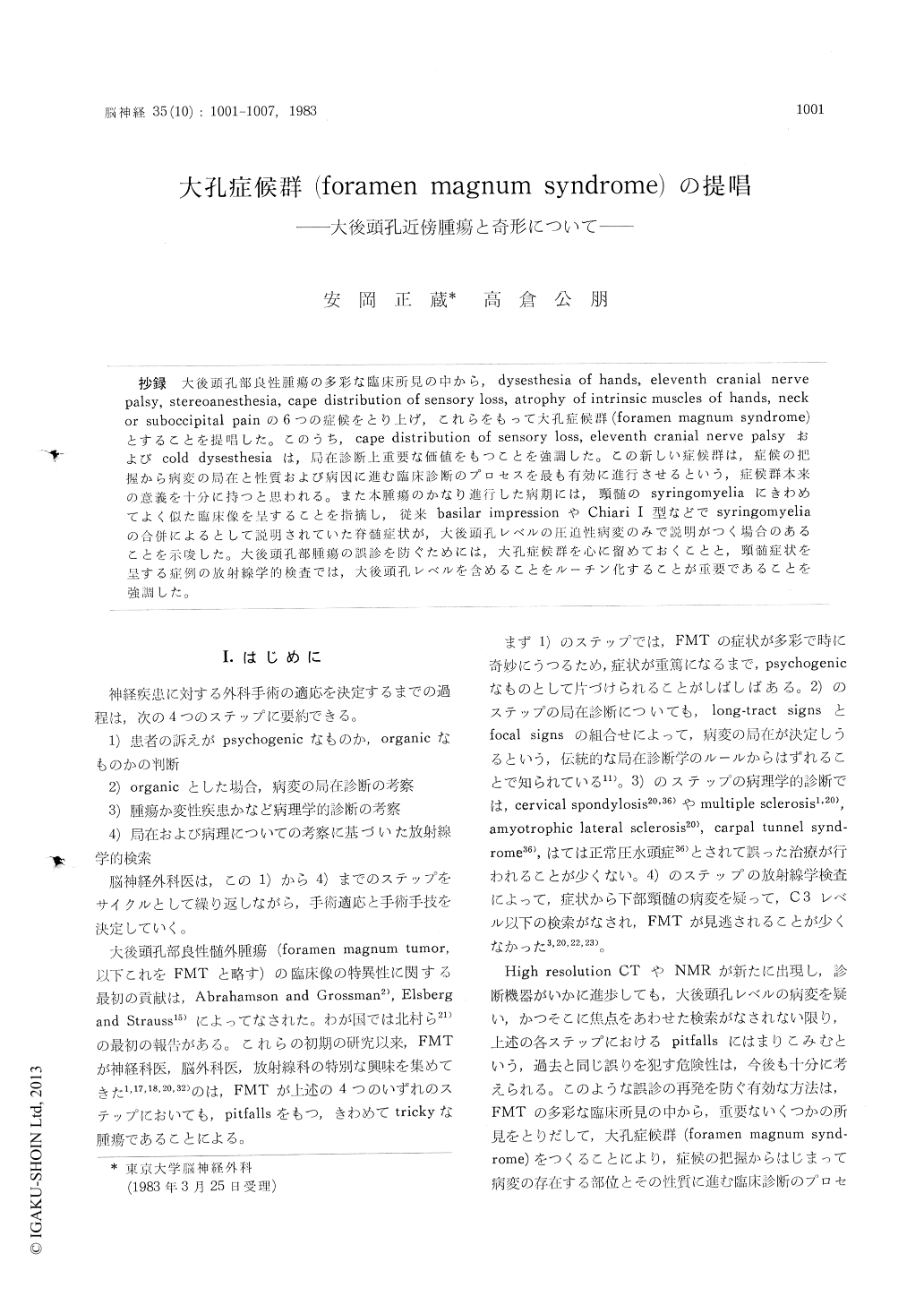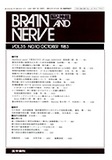Japanese
English
- 有料閲覧
- Abstract 文献概要
- 1ページ目 Look Inside
抄録 大後頭孔部良性腫瘍の多彩な臨床所児の中から,dysesthesia of hands, eleventh cranial nervepalsy, stereoanesthesia, cape distribution of sensory loss, atrophy of intrinsic muscles of hands, neckor suboccipital painの6つの症候をとり上げ,これらをもって大孔症候群(foramen magnum syndrome)とすることを提唱した。このうち,cape distribution of sensory loss, eleventh eranial nerve palsyおよびcold dysesthesiaは,局在診断上重要な価値をもつことを強調した。この新しい症候群は,症候の把握から病変の局在と性質および病因に進む臨床診断のプロセスを最も有効に進行させるという,症候群本来の意義を十分に持つと思われる。また本腫瘍のかなり進行した病期には,頸髄のsyringomyeliaにきわめてよく似た臨床像を呈することを指摘し,従来 basilar impressionや Chiari I型などで syringomyeliaの合併によるとして説明されていた脊髄症状が,大後頭孔レベルの圧迫性病変のみで説明がつく場合のあることを示唆した。大後頭孔部腫瘍の誤診を防ぐためには,大孔症候群を心に留めておくことと,頸髄症状を呈する症例の放射線学的検査では,大後頭孔レベルを含めることをルーチン化することが重要であることを強調した。
The clinical appearance of foramen magnum tumor is protean and, even at the stage when serious neurological deficits are present, the lesions are often misdiagnosed as another disease, espe-cially cervical spondylosis and multiple sclerosis, and patients may undergo improper concervative or even surgical treatments. The best guarantee against misdiagnosis, we believed, was to establish a definition of "Foramen Magnum Syndrome" to facilitate the recollection of its peculiar clinical findings.
"Foramen Magnum Syndrome" is composed of :
1. Cape distribution of sensory loss ;
2. Atrophy of the intrinsic muscles of the hands ; 3. Neck or suboccipital pain ;
4. Dysesthesia of the hands (numbness, tingling, and cold sensation) ;
5. Eleventh cranial nerve palsy;
6. Stereoanesthesia.
(Remember the mnemonic CANDES or DESCAN)
Among these, cape distribution of sensory loss, eleventh cranial nerve palsy and cold dysesthesia (not numbness or tingling sensation) are of great importance for topological diagnosis.
We also pointed out the simularities between the clinical picture of syringomyelia and that of the advanced stage of foramen magnum tumor. The syringomyelic syndrome, often seen in Arnold-Chiari malformation and basilar impression, has been attributed to the concurrent syrinx of cervical cord. But the clinical analysis of foramen magnum tumors showed that this is not always true and that compressive lesions at the foramen magnum alone can cause syringomyelic syndrome.

Copyright © 1983, Igaku-Shoin Ltd. All rights reserved.


